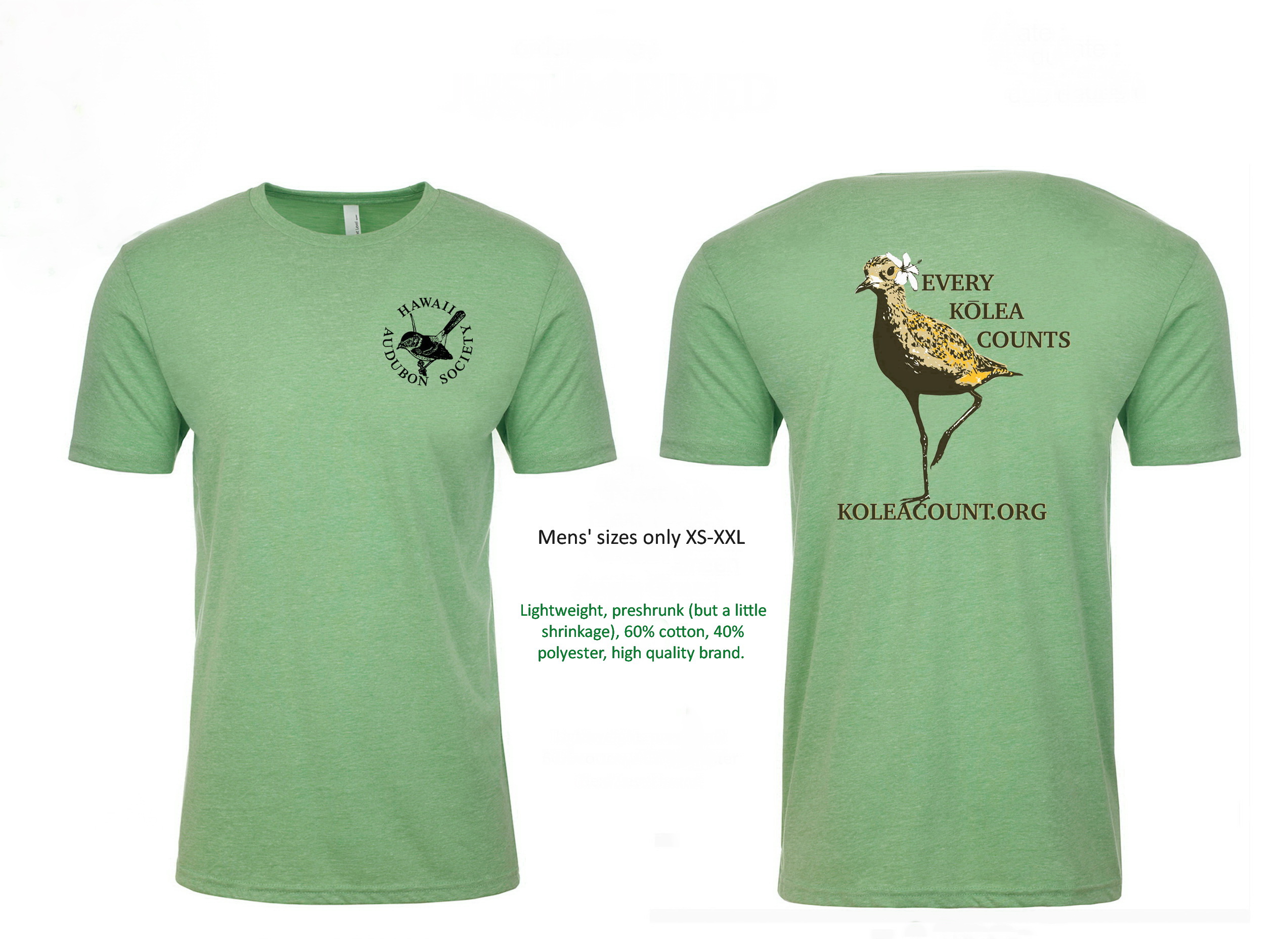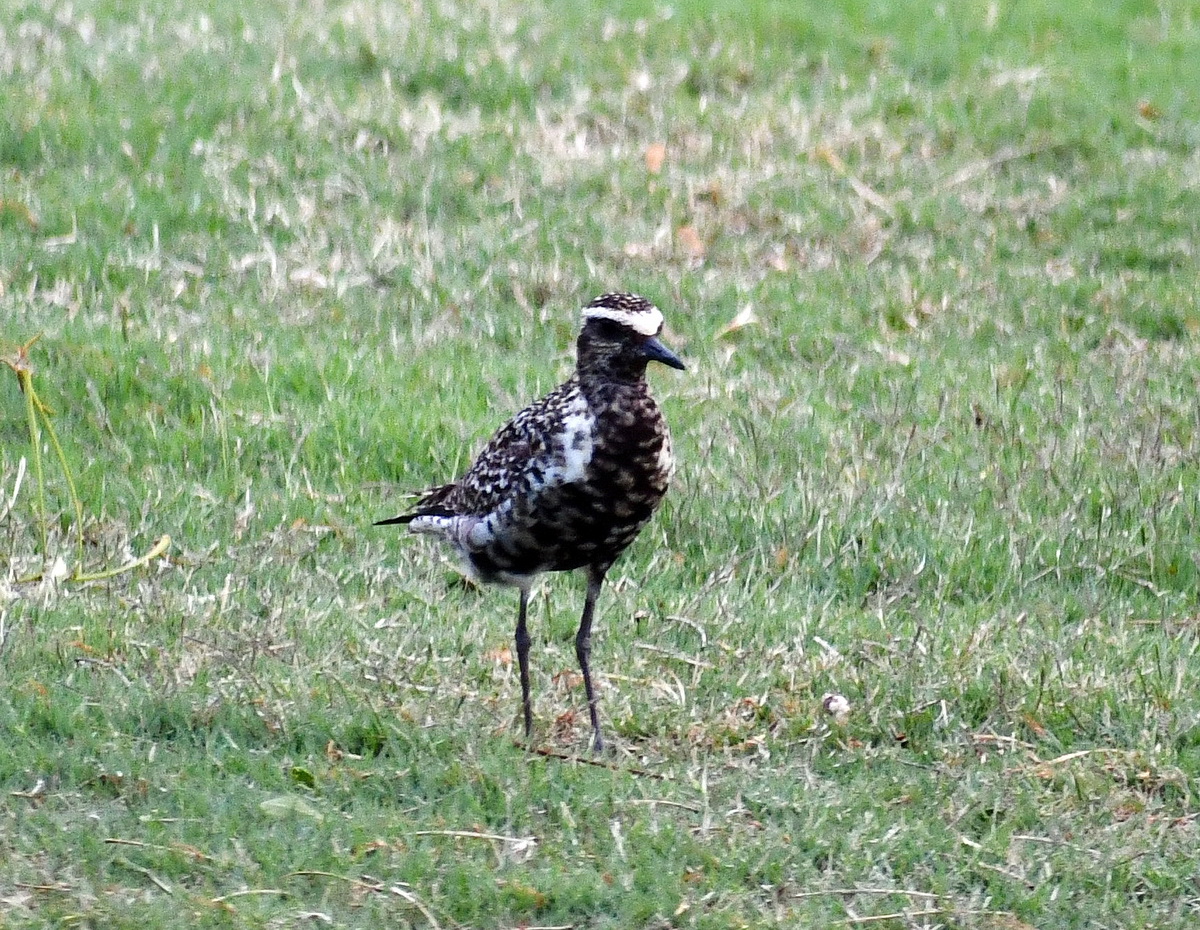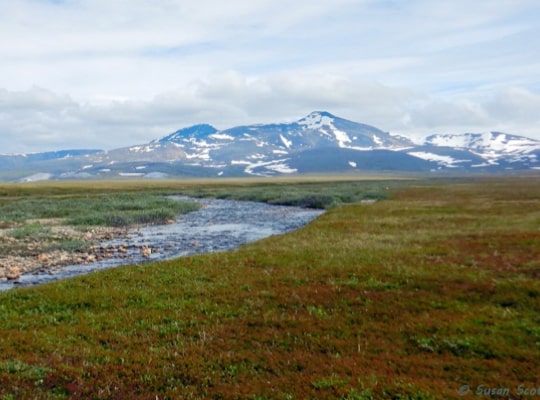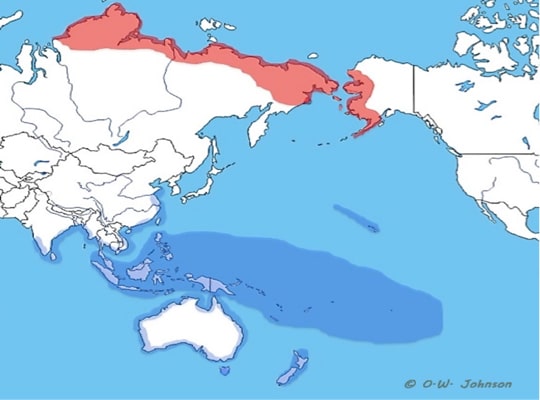Kolea Count Update for February 11, 2021
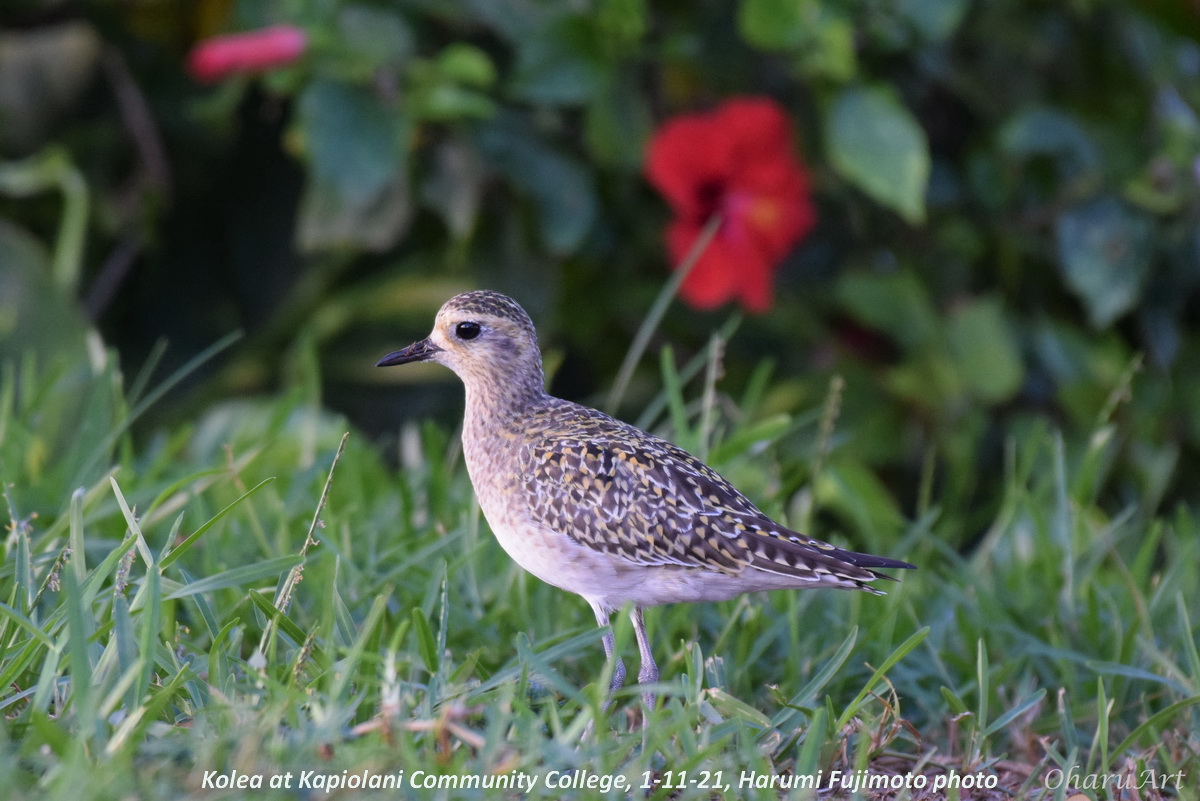
Thank you, plover lovers, for helping with the Hawaii Audubon Society’s first state-wide, all-volunteer Kolea count, and for submitting photos and videos, several shared in this update.
At the project’s start, I intended to travel to each of the Main Hawaiian Islands to advertise the count in person, scout Kolea foraging areas, and count birds myself. Given travel restrictions this year, however, I’ve been limited to my home island of Oahu. (Read my Kolea counting adventures at bit.ly/36Uyi0K)
Even so, happily, Kolea fans are spreading the word, as well as helping me improve the site and the system.
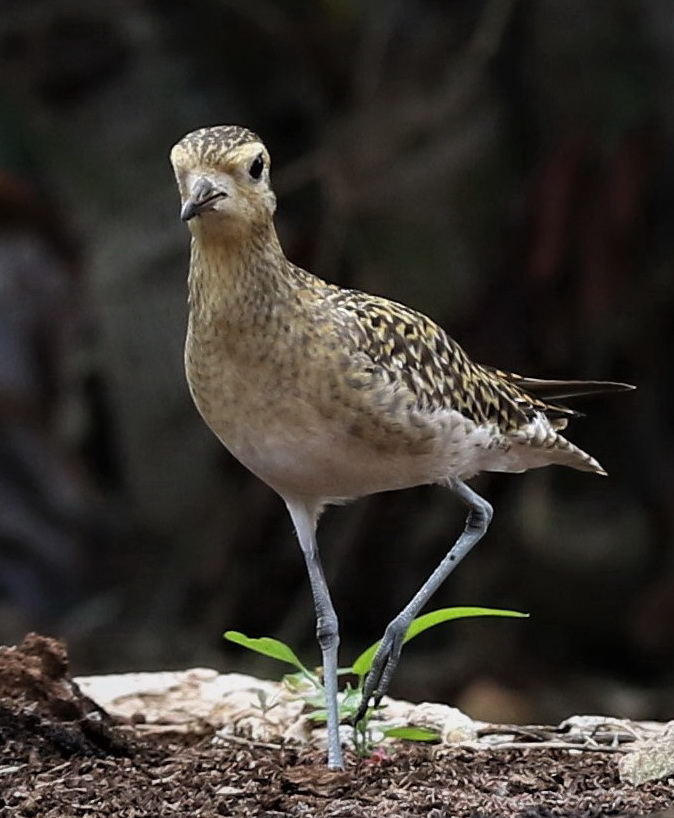 This plover, named “Newbie,” arrived in Debbie and Alan’s Enchanted Lake yard January 2, 2021, as if a gift for the new year.
This plover, named “Newbie,” arrived in Debbie and Alan’s Enchanted Lake yard January 2, 2021, as if a gift for the new year.
I can’t share the report worksheet due to privacy issues, but here are some details to date:
- Total number of entries in the REPORT tab as of today: 1,268
- Kauai reports: 31
- Oahu reports: 945 (including cute, short video by Michelle Kerklo: https://youtu.be/_XpuFiE9qOM)
- Maui reports: 72
- Molokai reports: 8
- Lanai reports: 0
- Big Island reports: 183
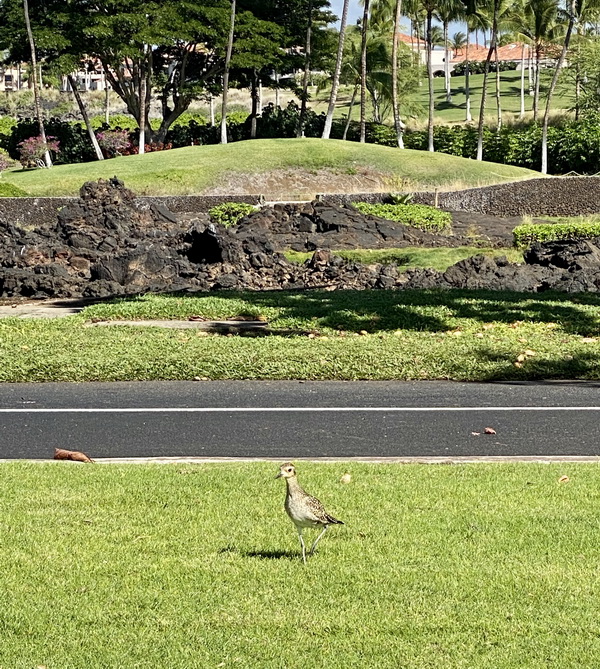 Waikoloa Beach Drive, February 2. Photo courtesy Toni McDaniel.
Waikoloa Beach Drive, February 2. Photo courtesy Toni McDaniel.
- No island entered: 29 (Entering your island and zip codes in the form saves me time from having to search them by location address. These fields will help us organize the information into future tables, graphs, and maps.)
- Wildlife managers on Oahu’s military bases have been super supportive. The highest count, conducted by four civilian volunteers on bicycles at Marine Corps Base Hawaii (MCBH) was 279; Scofield Barracks and Wheeler Army Airfield combined: 257; Bellows Air Force Station: 118 (that’s including 69 plovers in one flock at the Marine Corps Training airstrip)
- The lowest count at Kahalu’u Beach Park, and several other areas: 0 (Zero is noteworthy. It tells us where birds are not present.)
- Only 7 of the state’s 86 golf courses have been counted. After visiting each of Oahu’s 38 golf clubs, I learned that liability is the main reason for not lending carts to bird counters. In addition, some clubs aren’t allowing non-golfers to ride in a cart with a golfer due to Covid restrictions. I’m not a golfer, and wonder if it’s possible to play a round of golf and count Kolea at the same time? Golf course counting ideas welcome.
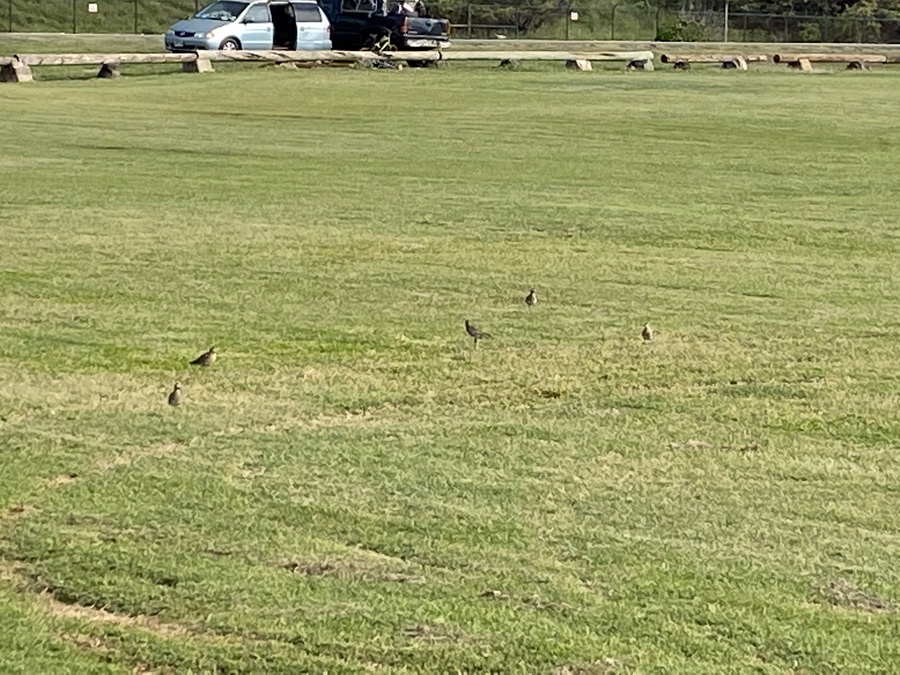 From Michael Feeley, February 6: “Grass field at Sandy Beach. Rare to see 5 together. Occasionally one would get irritated, but they mostly were peaceful for about 5 minutes. They flew off together when a kite flyer came by.”
From Michael Feeley, February 6: “Grass field at Sandy Beach. Rare to see 5 together. Occasionally one would get irritated, but they mostly were peaceful for about 5 minutes. They flew off together when a kite flyer came by.”
We will never count every plover in Hawaii, of course, or even find all the areas that host them, but this pilot program is helping us learn how to go about a statewide count. It’s …
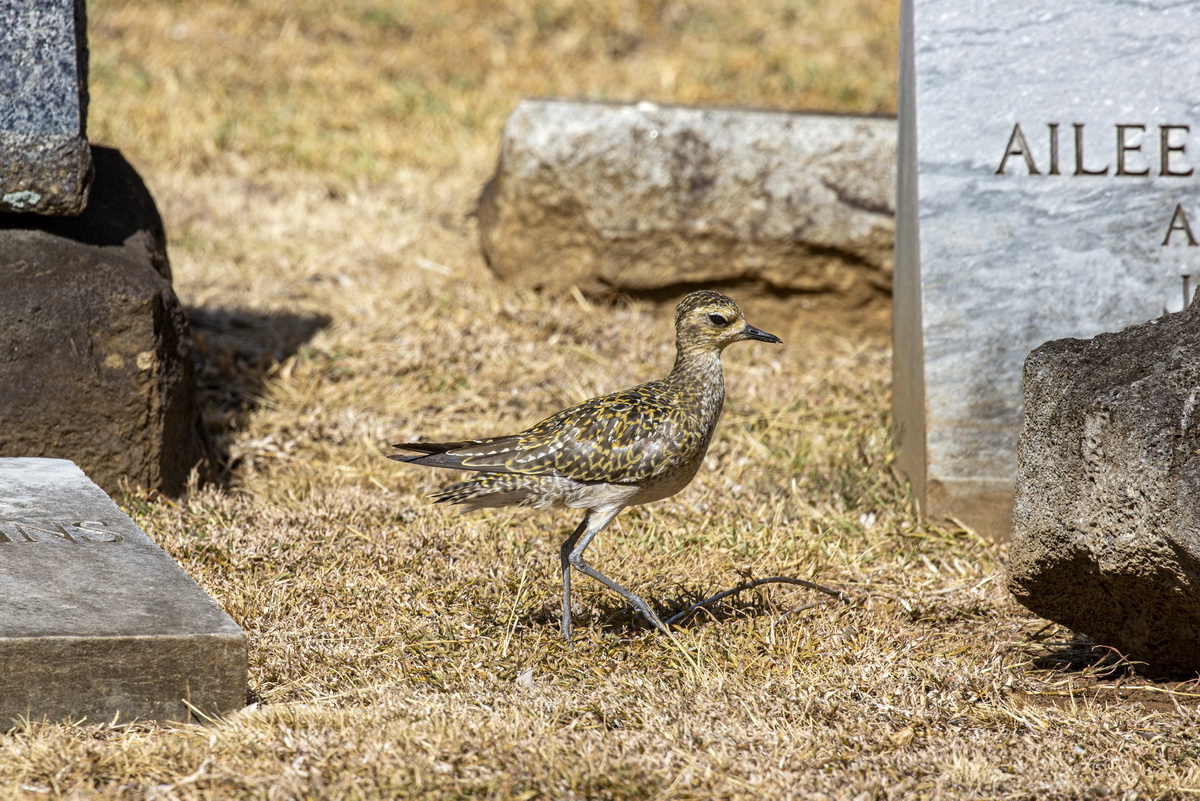
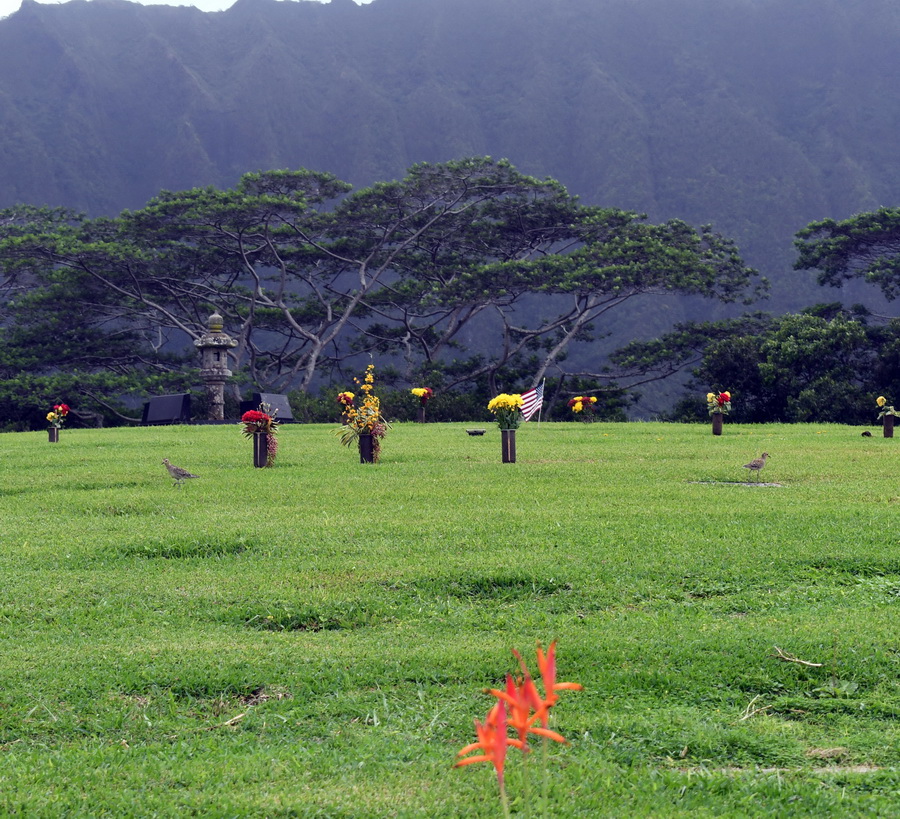 Some Kolea tolerate another individual nearby. These two forage near one another, with no fighting, at Hawaii State Veterans Cemetery, Windward Oahu. ©Susan Scott
Some Kolea tolerate another individual nearby. These two forage near one another, with no fighting, at Hawaii State Veterans Cemetery, Windward Oahu. ©Susan Scott 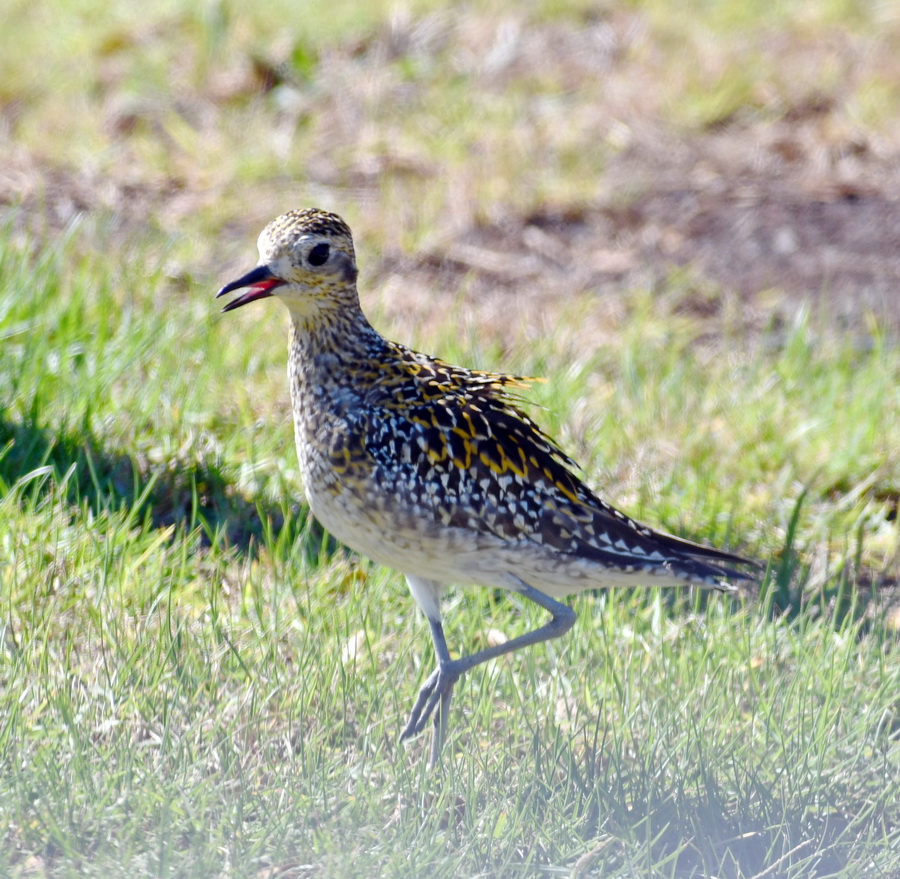 This bird, unperturbed by vehicles or people, forages in the parking lot of the Ala Wai Golf Course. ©Susan Scott
This bird, unperturbed by vehicles or people, forages in the parking lot of the Ala Wai Golf Course. ©Susan Scott 
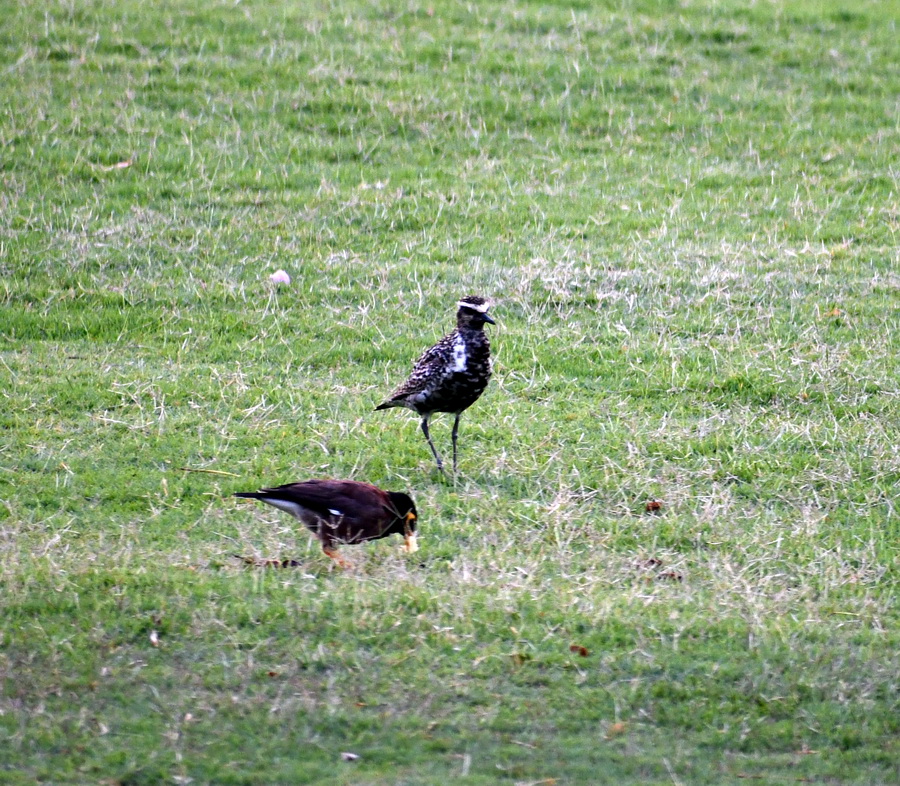
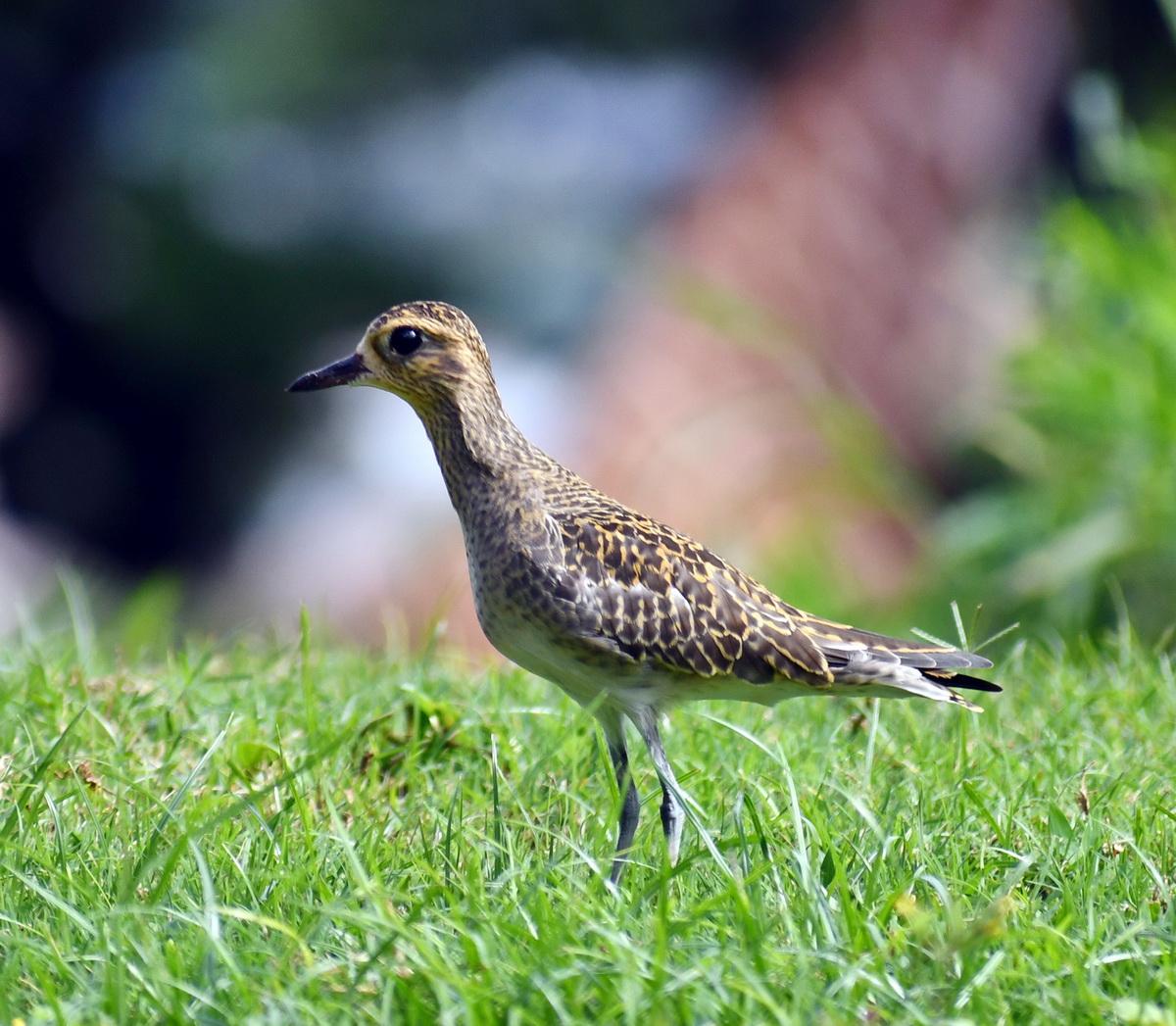 Typical winter colors of Kolea. ©Susan Scott
Typical winter colors of Kolea. ©Susan Scott  Mauna Kea Golf Course, Big Island.
Mauna Kea Golf Course, Big Island. 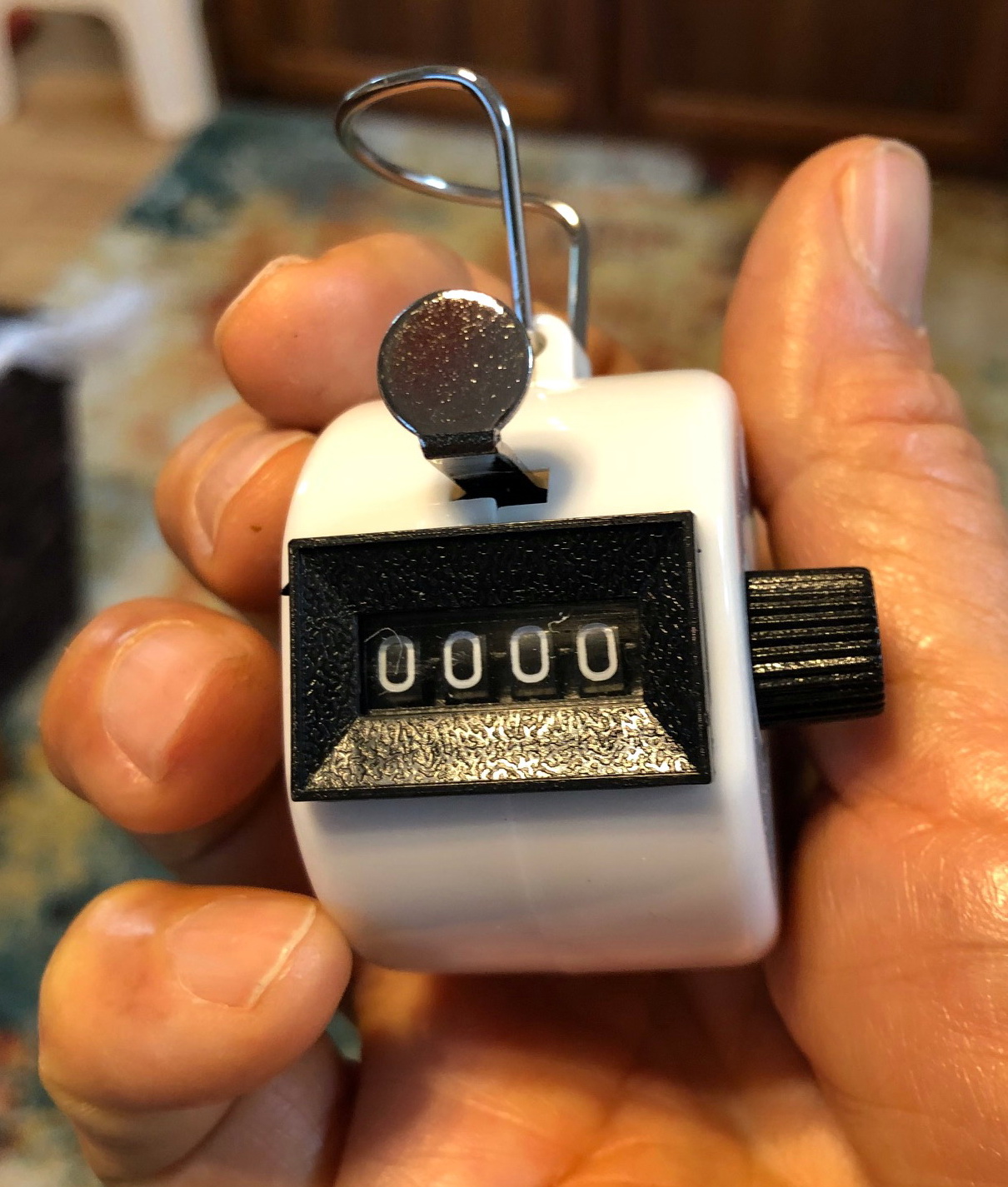
 Kapalua Resort, Lahaina, Maui …
Kapalua Resort, Lahaina, Maui …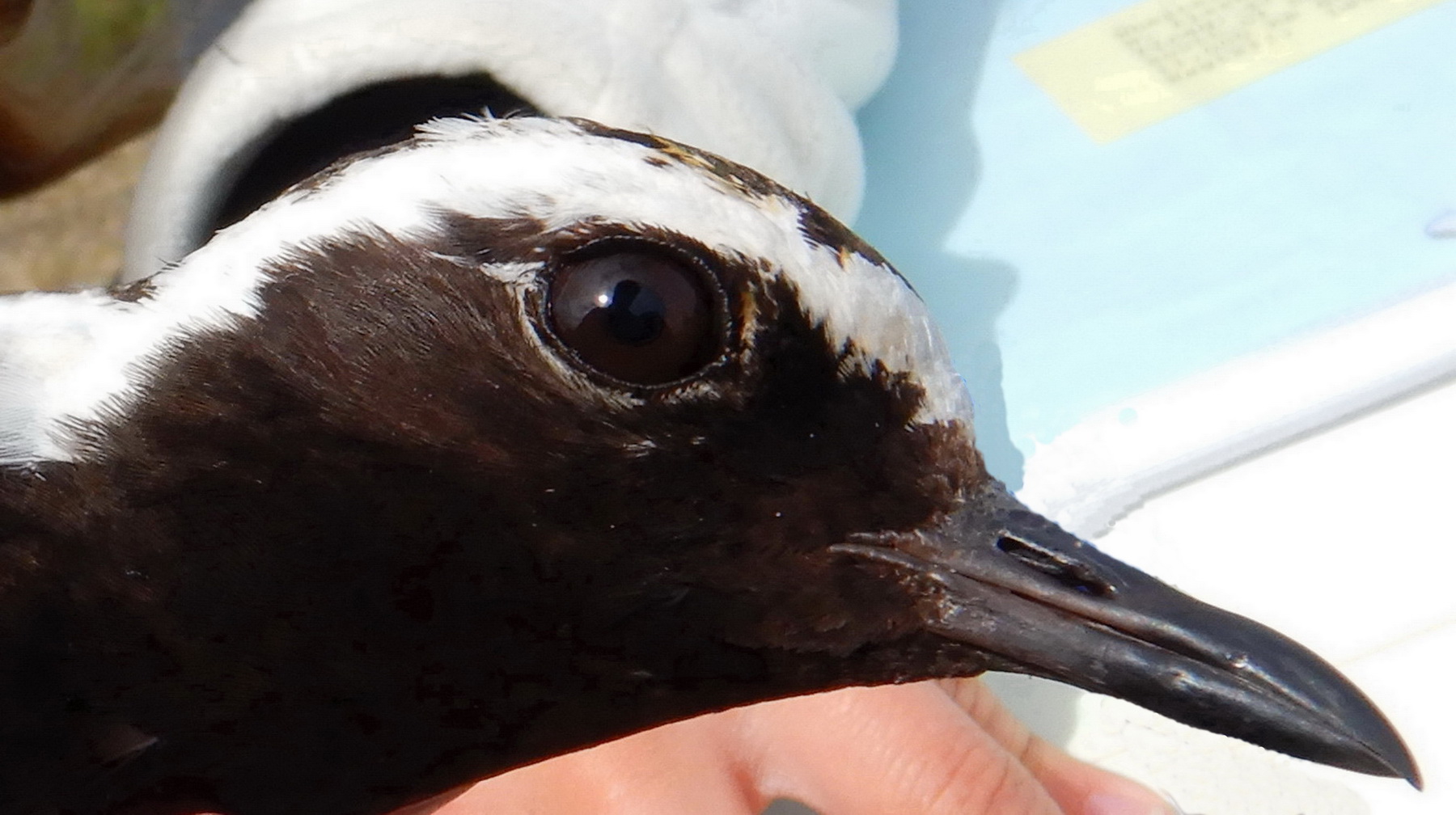
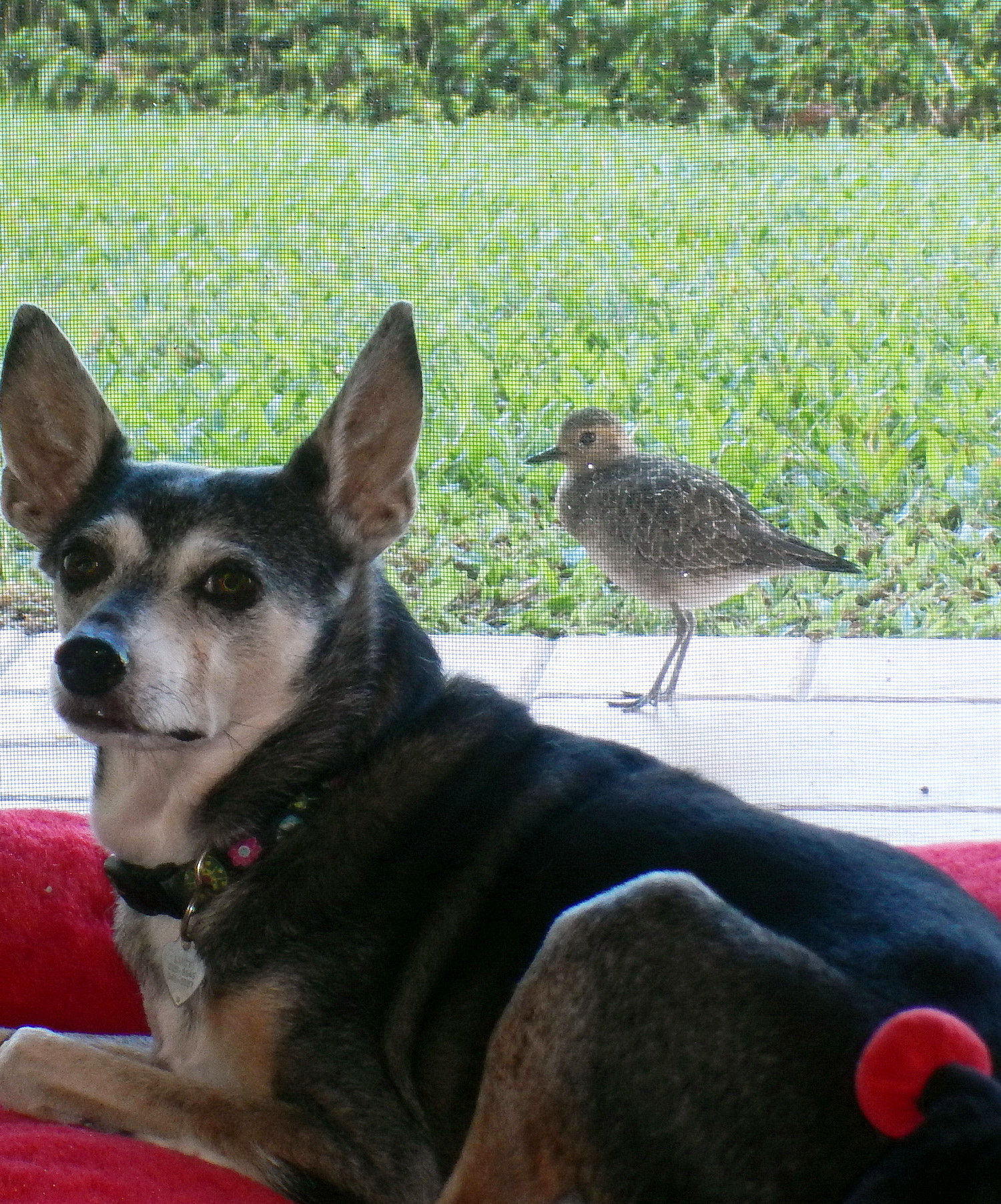 This Kolea, named Gracie, learned that the family dog, Lucy, was no threat. A screen separates the dog and the bird. ©Susan Scott
This Kolea, named Gracie, learned that the family dog, Lucy, was no threat. A screen separates the dog and the bird. ©Susan Scott 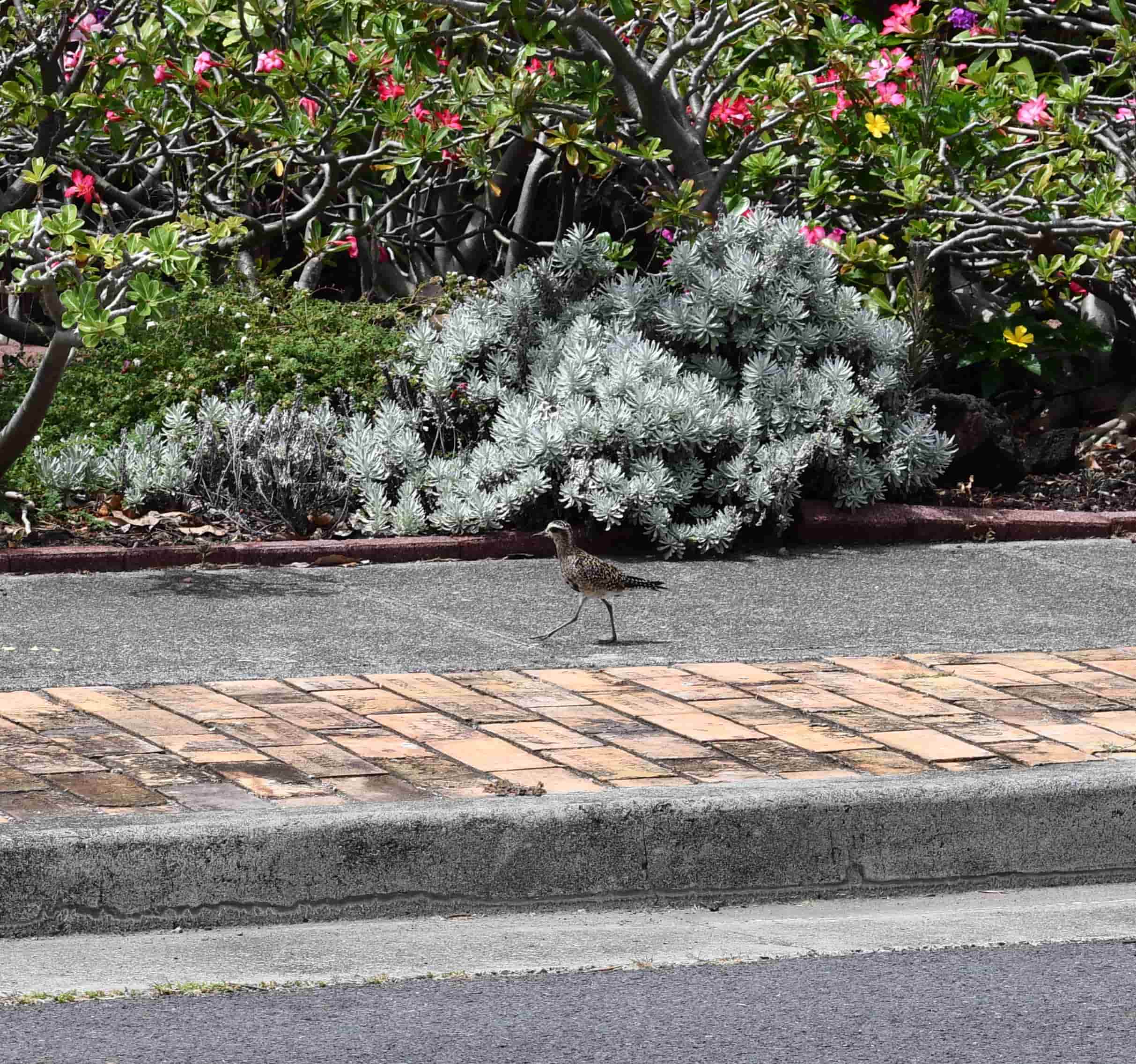
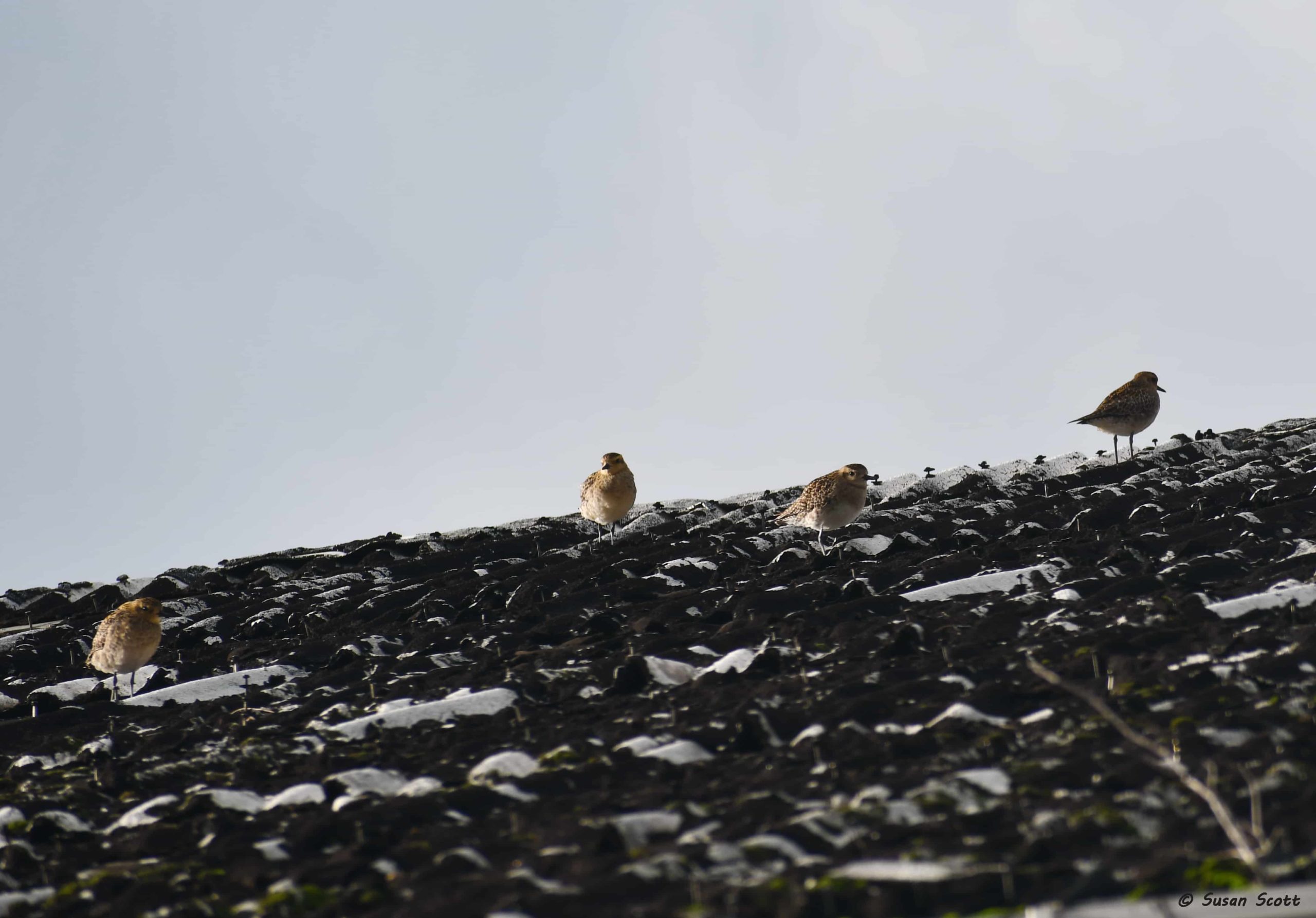 Bedtime for birdies. A dusk gathering of Kolea on a rooftop at Midway Atoll. ©Susan Scott
Bedtime for birdies. A dusk gathering of Kolea on a rooftop at Midway Atoll. ©Susan Scott 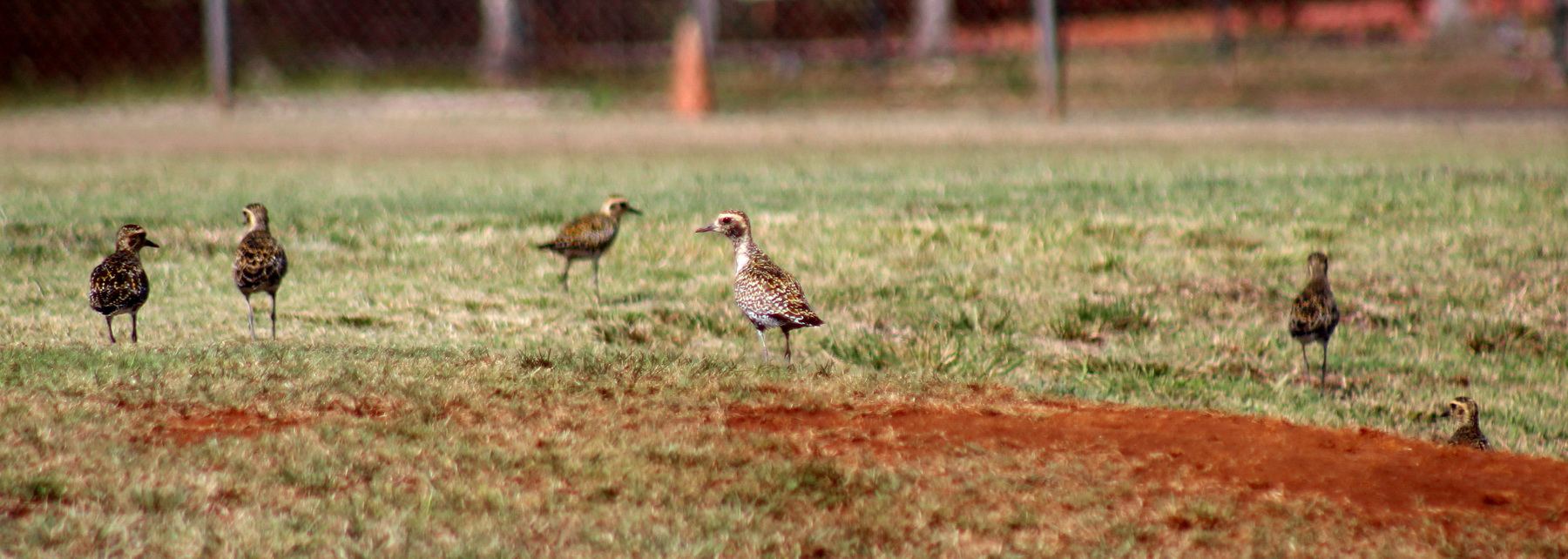
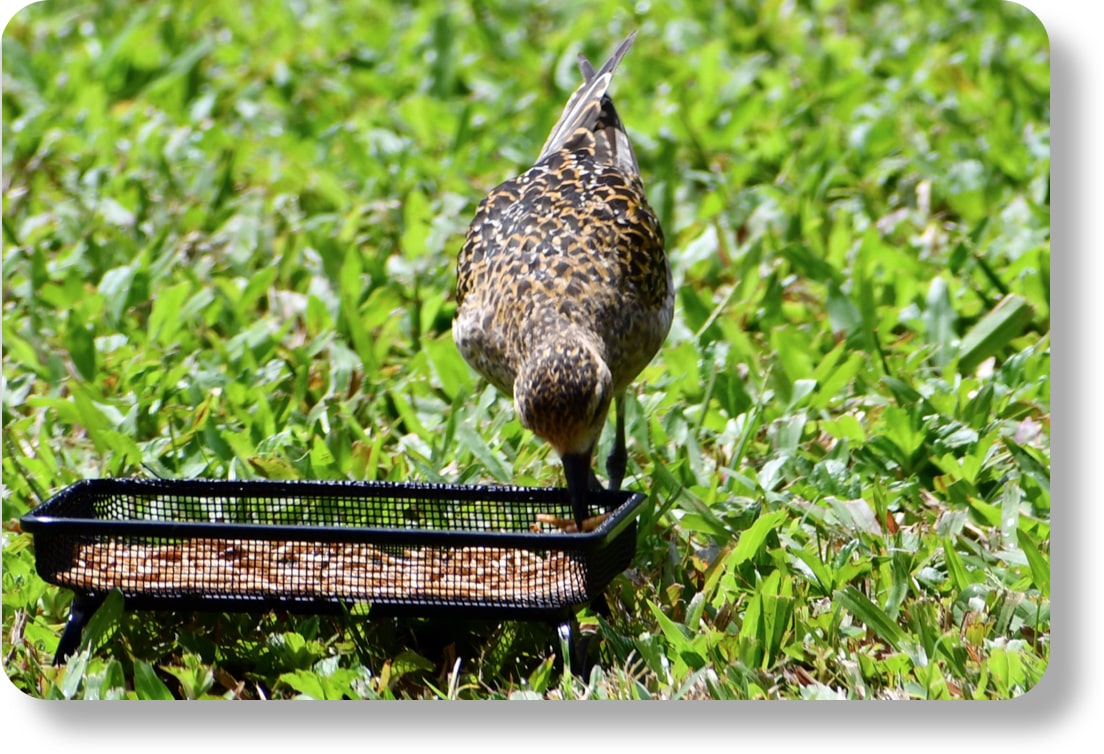 Little Count: A Kaneohe resident grows mealworms for his backyard Kolea. ©Susan Scott
Little Count: A Kaneohe resident grows mealworms for his backyard Kolea. ©Susan Scott 